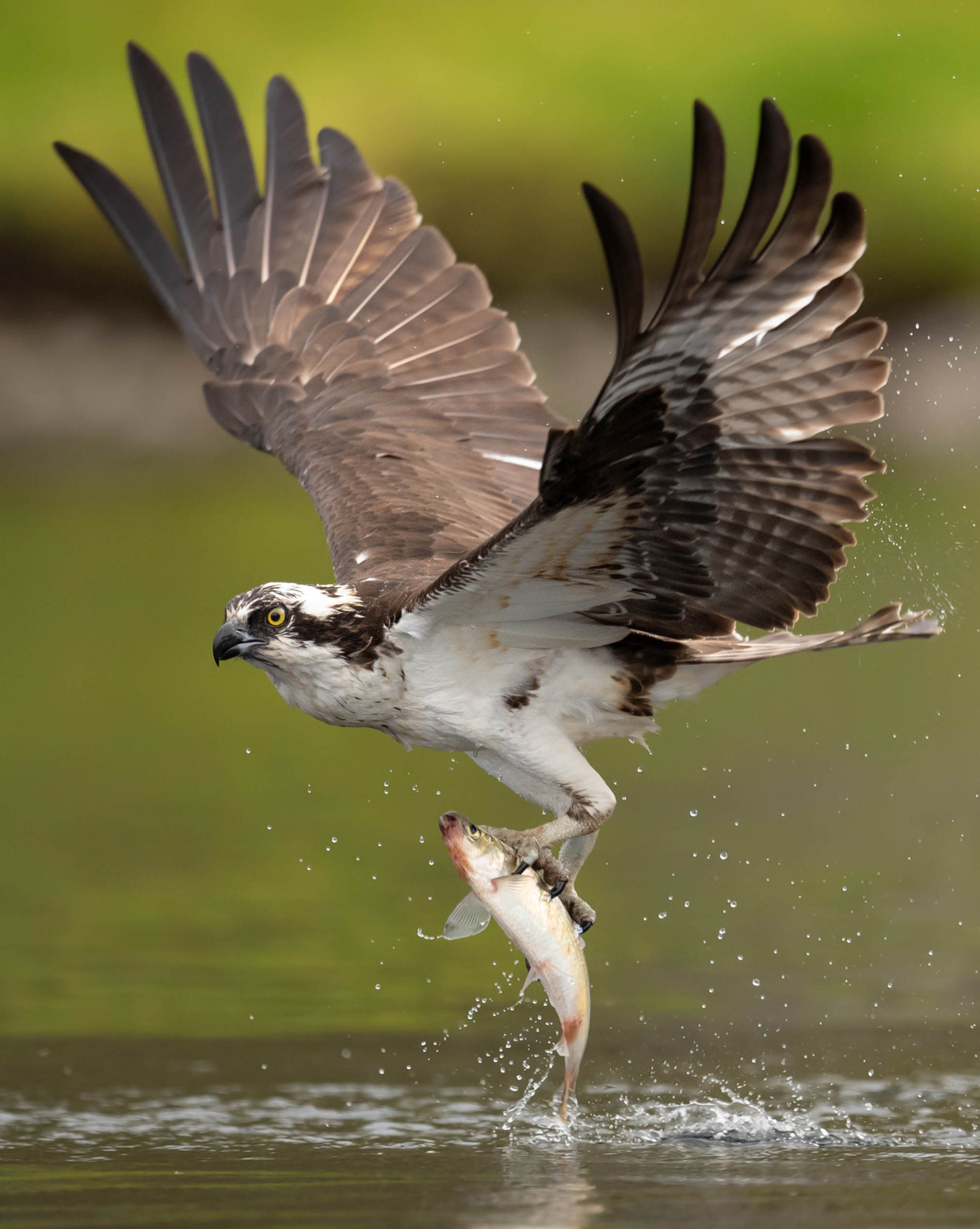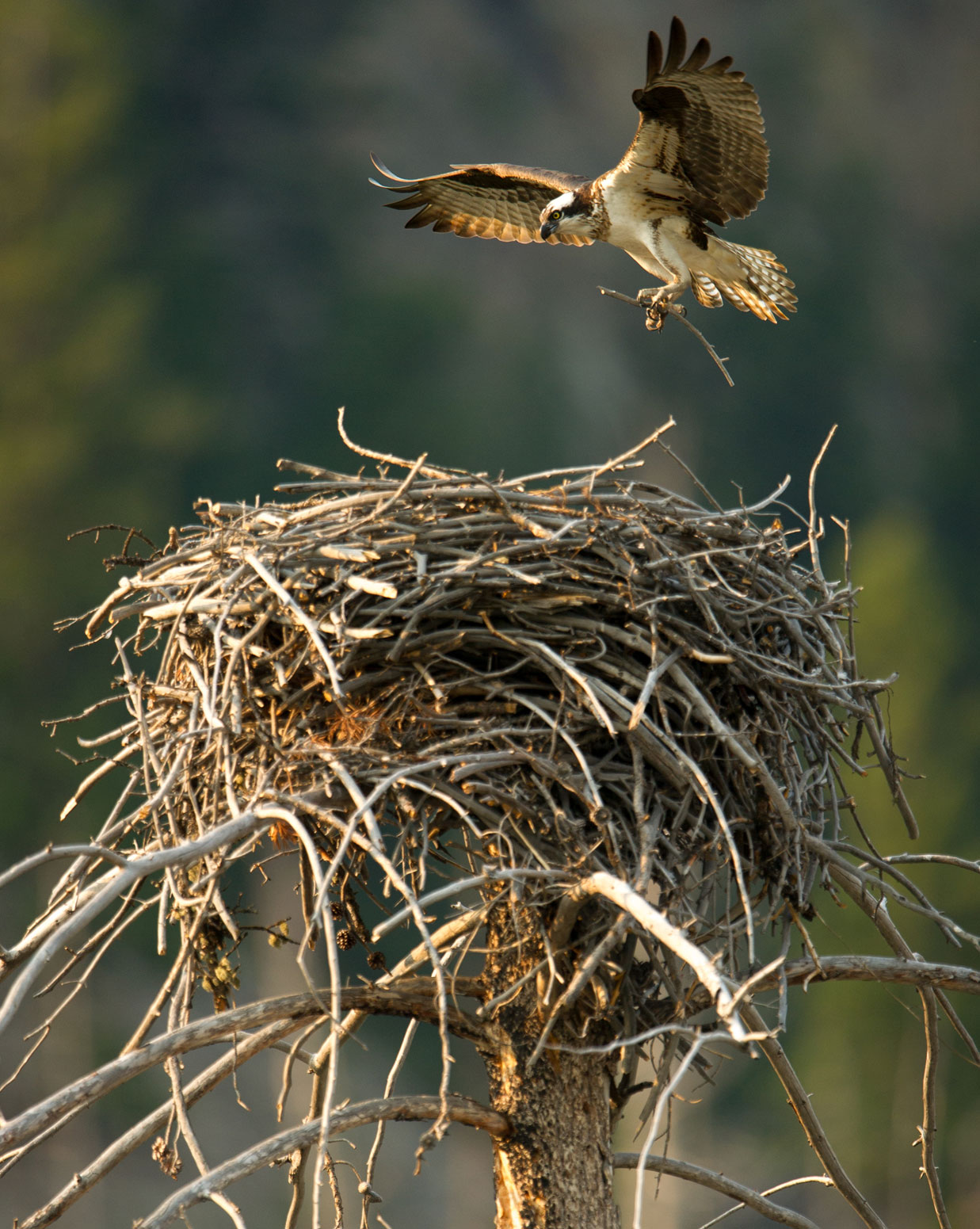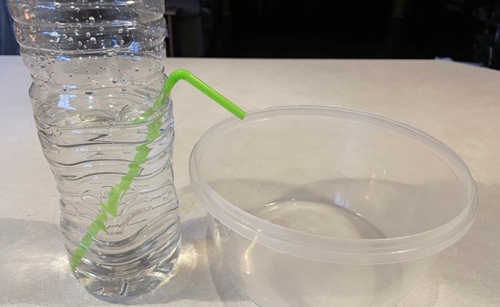Ospreys (Pandion haliaetus) are fascinating birds that have recovered from the brink of extinction. With their 5-foot wingspan and distinct brown, black, and white colors, ospreys are truly a sight to behold. Let’s learn more about the incredible osprey!
Interesting facts about ospreys
Ospreys are raptors that primarily eat fish. They eat so much fish, and they’re so skilled at catching them, that they’re also known as fish hawks. This bird will fly up to 130 feet into the air and then dive into the water to catch its prey. Ospreys are well-adapted for this maneuver. Their wings have a waterproof coating and they can even close their nostrils when they plunge into the water. Their feet are especially interesting – they have a reversible outer toe and barbed pads on the sole that help them more easily grasp fish.
Ospreys, with their average five-foot wingspan, are one of the larger raptors. Their backs are brown and their chests are white. The underside of the wings is white with a dark patch. Ospreys have yellow eyes and white heads, so they’re often mistaken for bald eagles, although their black eye stripe can be used to properly identify them.
Ospreys that live in Washington state will migrate to warmer climates, while those that live in southern states can live in the same spot all year.
Osprey nests
Ospreys like to nest close to water on tall objects in open areas. This lets ospreys easily approach the nest while keeping their babies safe from predators on the ground.
They often nest on telephone poles, pilings, and other human-made structures if they can’t find an appropriate tree or cliff. Some organizations even build large, tall platforms specifically for osprey nests.
The nest itself is built out of sticks and lined with grasses, algae, and other materials. Ospreys typically return to the same nest each season and add new materials to the nest each year. Over time, nests can become very large, sometimes measuring 13 feet deep and 3-6 feet across!
Osprey cam
Clark Public Utilities is dedicated to protecting wildlife in our region. Back in 2020, multiple departments teamed up to mount a camera on a power pole where there was an osprey nest. They set up a livestream on YouTube to share with the community what wonderful animals live among us.
While Osprey Cam is live year-round the adults usually arrive mid/late March and can be observed until the hatchlings leave the nest months later. Each year we have a contest, called Osprey Watch, for customers to guess when the eggs will hatch! The top three closest guessers receive a commemorative osprey watch poster and the first 1,000 people who enter the contest receive an Osprey Watch sticker.
Code of conduct
Osprey cam provides a glimpse into the lives of animals that most of us don’t normally get to see. But we believe that our role is to do just that – to watch and observe these beautiful animals. That means that sometimes we can see upsetting things, like death.
During the heat wave of 2021, the osprey babies died. We turned off the camera to prevent our audience from seeing something so sad. However, we did not interfere in this natural occurrence because we feel it’s better to let nature take its course. Animals do die in nature and although our compassion may urge us to intervene, this is part of our world.

- Ospreys are found on nearly every continent in the world (except Antarctica)!
- Ospreys have existed for 11 million years!
- Ospreys can travel a lot – some travel over 160,000 miles in their lifetime!
Osprey conservation
Ospreys and many other raptors suffered during the 1950s to the 1970s with the widespread use of the pesticide Dichloro-diphenyl-trichloroethane (DDT). This substance caused eggshells to thin to such a degree that no babies could be born. After DDT was banned in 1972 in the US, ospreys have dramatically recovered. While some states still have them listed as threatened or endangered, in general, the osprey population is healthy with few conservation concerns.








